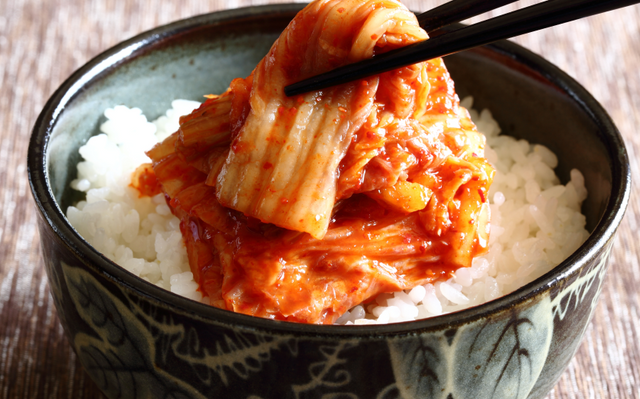Follicular phase foods to fuel your body
Making sure your body gets the right nutrients to keep it going through every phase of your cycle is super important – including during the follicular phase. In this article, we'll explore how nutrition can play a vital role in supporting your overall wellbeing during this phase, plus give you the lowdown on all the delicious follicular phase food you’ll want to stock up on.
But before we start chatting about all things food, let's take a quick recap of what's happening in your body during the follicular phase of your menstrual cycle.
An overview of the follicular phase
Your menstrual cycle consists of 4 key phases: the menstrual, follicular, ovulation and luteal phases. The follicular phase starts on the first day of your period and lasts until ovulation. During this phase, your brain releases follicle-stimulating hormone (FSH), signalling to your ovaries to produce tiny sacs called follicles, each containing an immature egg. As the dominant egg matures, estrogen levels rise, and the lining of your uterus thickens.
The length of the follicular phase can vary from person to person, typically ranging from 11 to 27 days, depending on your cycle. Having a long follicular phase doesn't necessarily mean your chances of getting pregnant are lower. It's likely that your overall menstrual cycle is naturally longer, too. If your follicular phase is on the shorter side, it could mean that getting pregnant might be a bit trickier, especially as you get closer to menopause. If you're worried, it's always a smart move to consult your doctor, just to be on the safe side. They'll have the best advice for your unique situation.
The importance of nutrition during the follicular phase
Nutrition is a key player in maintaining harmony during the follicular phase. “We know that nutrition impacts the length of your cycle,” says Lora Attia, Nutritionist and Leading PCOS Dietitian at Nutrition Plus. “If someone is experiencing long cycles or short cycles, it’s important to know that nutrition can actually help return a cycle to a more average length.”
Once you’ve moved through the (typically) low-energy phase of your period, your estrogen levels will begin to rise, and you may start to experience an increase in energy. Now, it's super important to feed your body the right foods to keep up with this newfound energy. That's where nutrition comes in and plays a big role.
Lora says, “There are a number of things that can influence what’s going on, or meant to be going on during the follicular phase, but a well-balanced diet is always going to be essential for optimal hormone balance and function.”
What to eat during the follicular phase
So what follicular phase foods should you be adding to the shopping list, exactly?
Omega-3 fatty acids are powerful anti-inflammatories that can help reduce inflammation and ease symptoms of PMS, such as pain and cramping early on in the follicular phase. Stock up on nuts and seeds, particularly pumpkin and ground flax seeds, for an omega-3 boost.
Magnesium is a fantastic addition to your diet during this phase. It can help reduce stress, calm the nervous system and even help with your period cramps. Green leafy vegetables, chocolate and nuts are excellent sources of magnesium.
High-fibre foods are known to help your body eliminate excess estrogen. Since estrogen levels are high during the follicular phase, increasing your fibre intake is a great idea. Opt for things like whole grains, beans and lentils.
Fermented foods like kefir, kimchi, kombucha, pickled vegetables, sauerkraut and yoghurt contain probiotics that can help support your gut health and a healthy hormone balance throughout your cycle.
Antioxidants are crucial during the follicular phase to protect your follicles and promote egg health. “The follicular phase is a time of growth. So having lots of antioxidants from fruit, berries and leafy greens is going to help protect your follicles and egg health from oxidative stress,” says Lora.
Healthy fats and carbohydrates are essential macronutrients. Healthy fats, like those found in avocado, nuts and seeds, serve as building blocks for hormone production. Lora says that when it comes to carbohydrates, you should opt for complex ones with a low glycemic index: “Complex carbohydrates that are low GI are important in the follicular phase. So things like whole grains, legumes, vegetables – they all provide sustained energy, and they also help to regulate your blood sugar levels. So that's promoting stable hormone production.”
Micronutrients like iron, vitamin C and zinc also play a significant role in hormone balance. Iron-rich foods like leafy greens, legumes and lean meats nourish your reproductive organs and support proper menstruation. Vitamin C aids in iron absorption, while zinc supports hormone production and regulation. Add oysters, pumpkin seeds and spinach to your diet to ensure you’re getting enough zinc. And Lora says to keep an eye on your iron. “If you are not getting enough iron, it can exacerbate those feelings of fatigue and irritability.”
Support your cycle with the food you eat
So there you have it – a whole shopping list’s worth of tasty food your body will love during your follicular phase. Keep in mind that everyone's needs may be a little different, so it's crucial to pay attention to your body and make tweaks that suit you best. When it comes to maintaining a healthy menstrual cycle, fueling your body with the right nutrients is just the beginning. Check out more tips for managing your menstrual cycle on our blog.







